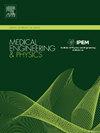一种基于双通道脑电信号的初级情绪识别算法
IF 1.7
4区 医学
Q3 ENGINEERING, BIOMEDICAL
引用次数: 0
摘要
随着神经科学和计算机科学的发展,人们正在推动采用自动化方法来帮助个人识别自己的情绪。情绪检测通常是通过使用脑电图(EEG)信号来进行的。然而,医疗设备昂贵,不舒服,不方便,因为大量的电极和头发覆盖的头皮。这一挑战需要解决这个问题,其中需要这么多电极将被一个或两个电极取代,然后是一个更简单的信号处理步骤。为了解决这一问题,本研究提出了一种算法,该算法仅使用一对EEG电极来识别初级情绪,并基于阈值规则和标准分类技术对其进行分类。该算法利用基于子带水平信号能量变化的两个简单特征,并采用特征融合技术进一步减少计算量。这将在更大程度上降低处理能力,并提高实际可行性。实验结果表明,该特征融合策略将识别准确率从97.7%提高到98.4%。结果表明,本文提出的情感识别方法是可行的、高效的,可以在便携式硬件平台上以最小的内存和计算能力实现。本文章由计算机程序翻译,如有差异,请以英文原文为准。
A simple algorithm for primary emotion recognition from dual channel EEG signals
With the development of neuroscience and computer science, there is a push to employ automated methods to assist individuals in identifying their emotions. Emotion detection is normally carried out by using electroencephalogram (EEG) signals. However, the medical equipment is costly, uncomfortable, and inconvenient because of the numerous electrodes and hair-covered scalp. This challenge demands for a solution to this problem where the requirement of so many electrodes will be replaced by one or two electrodes followed by a simpler signal processing steps. As a solution to this, the current study proposes an algorithm which uses only a pair of EEG electrodes for identifying primary emotions and classifies them based on threshold based rule along with standard classification techniques. The algorithm utilizes two simple features based on signal energy variations in the sub band levels and a feature fusion technique is adopted to further reduce the computational burden. This will lead to reduction in processing power to a greater extent and practical viability will be enhanced. The experimental results prove that the feature fusion strategy does raise recognition accuracy from 97.7 % to 98.4 %. It is shown that the suggested method for emotional recognition is workable and efficient which can be implemented on portable hardware platforms with minimum memory and computational power requirement.
求助全文
通过发布文献求助,成功后即可免费获取论文全文。
去求助
来源期刊

Medical Engineering & Physics
工程技术-工程:生物医学
CiteScore
4.30
自引率
4.50%
发文量
172
审稿时长
3.0 months
期刊介绍:
Medical Engineering & Physics provides a forum for the publication of the latest developments in biomedical engineering, and reflects the essential multidisciplinary nature of the subject. The journal publishes in-depth critical reviews, scientific papers and technical notes. Our focus encompasses the application of the basic principles of physics and engineering to the development of medical devices and technology, with the ultimate aim of producing improvements in the quality of health care.Topics covered include biomechanics, biomaterials, mechanobiology, rehabilitation engineering, biomedical signal processing and medical device development. Medical Engineering & Physics aims to keep both engineers and clinicians abreast of the latest applications of technology to health care.
 求助内容:
求助内容: 应助结果提醒方式:
应助结果提醒方式:


